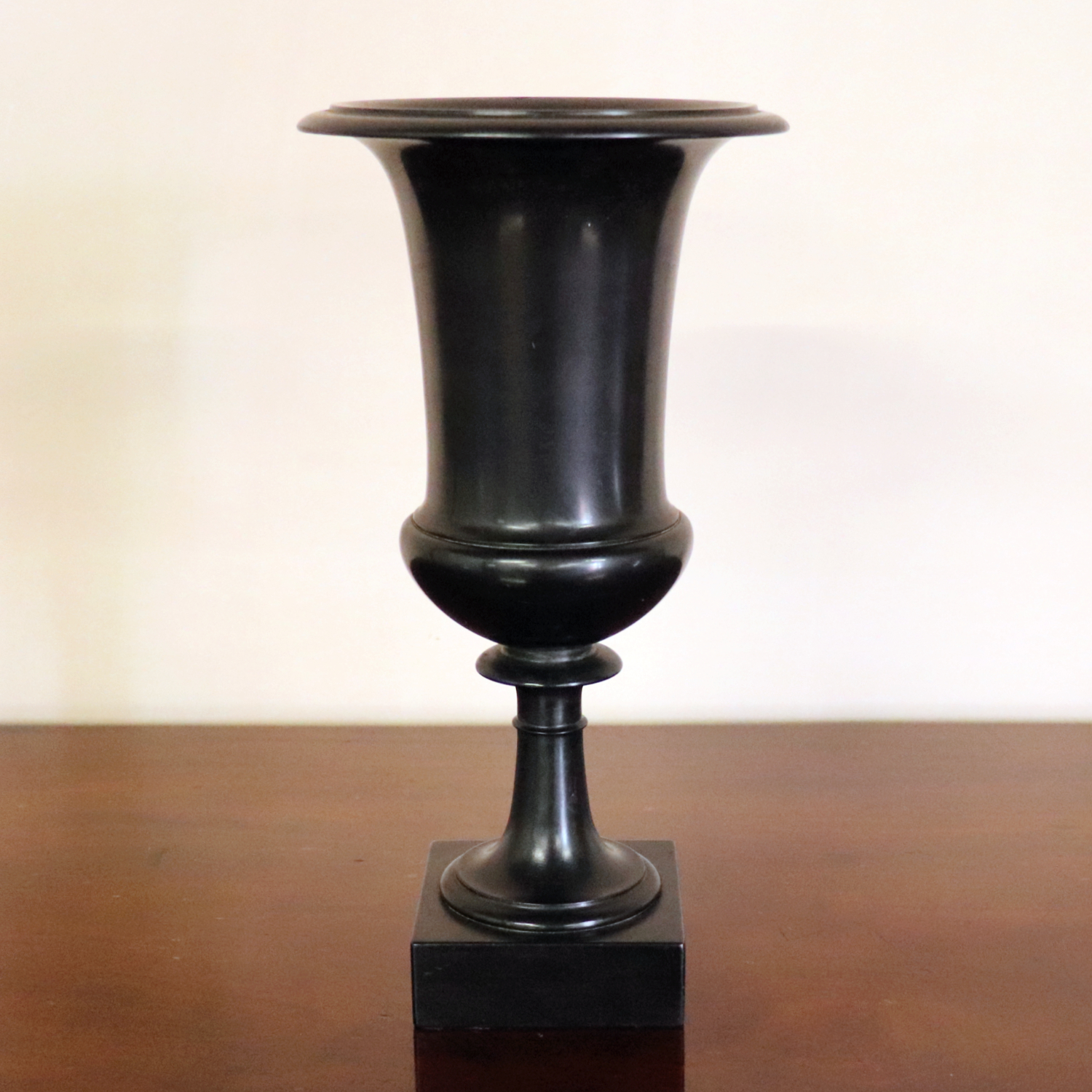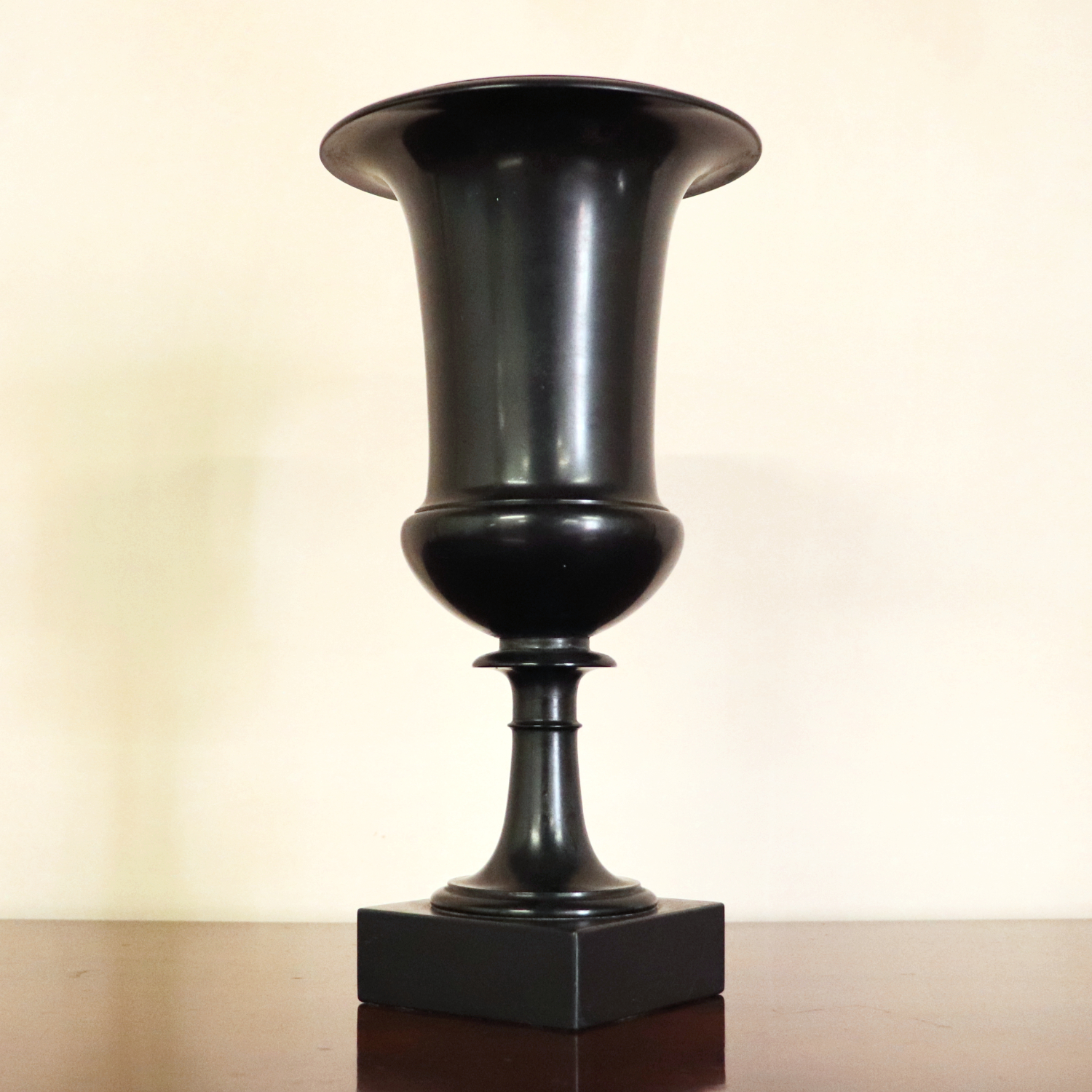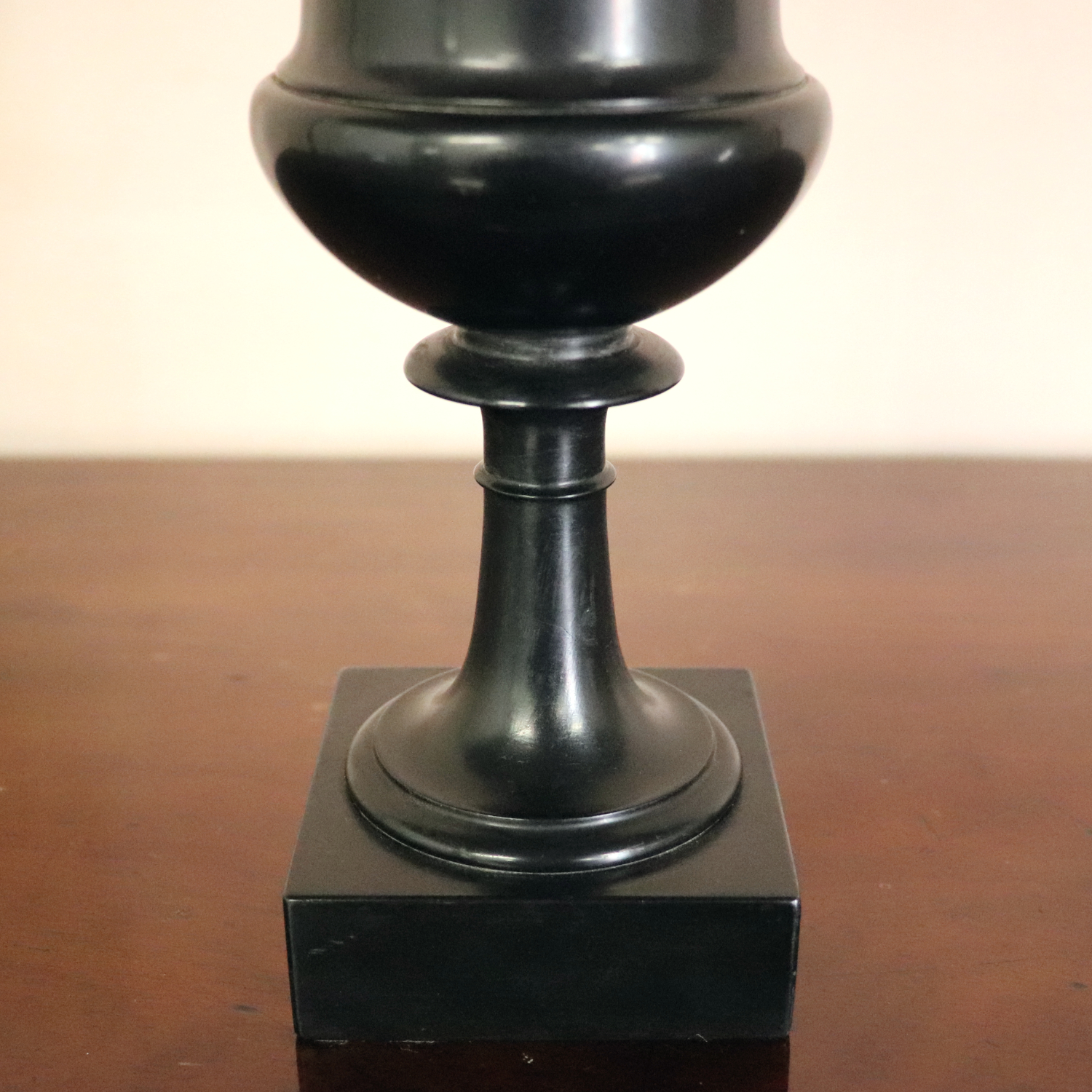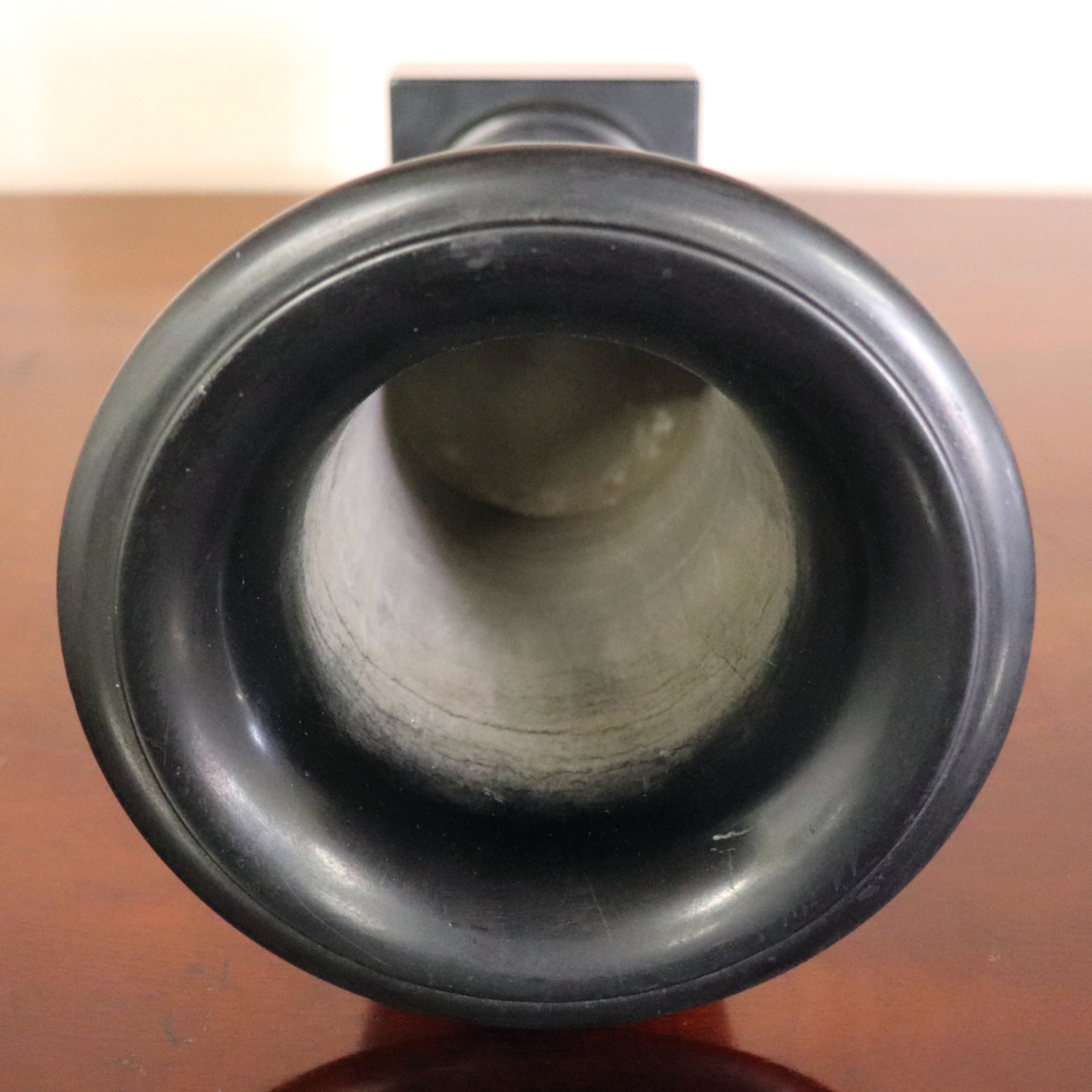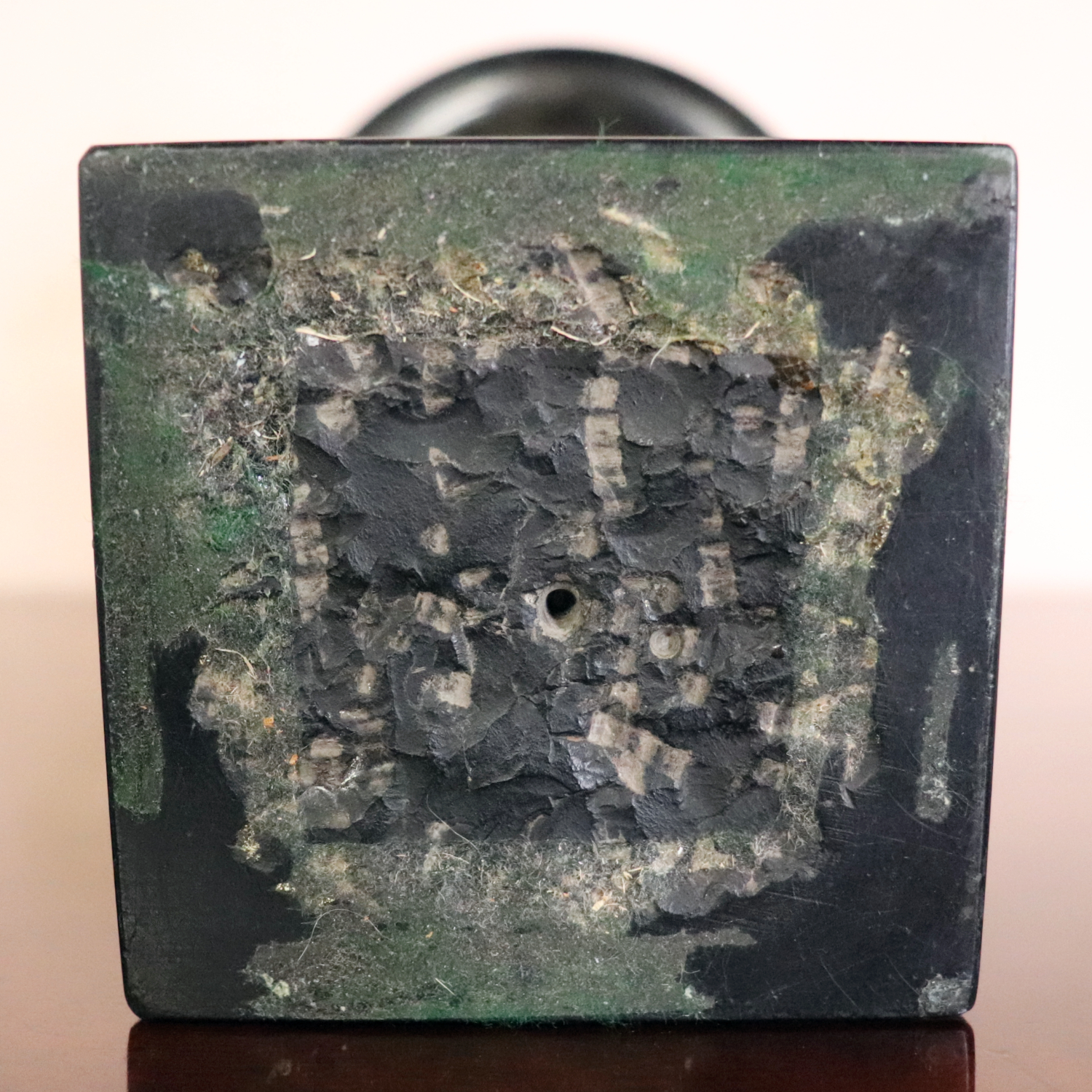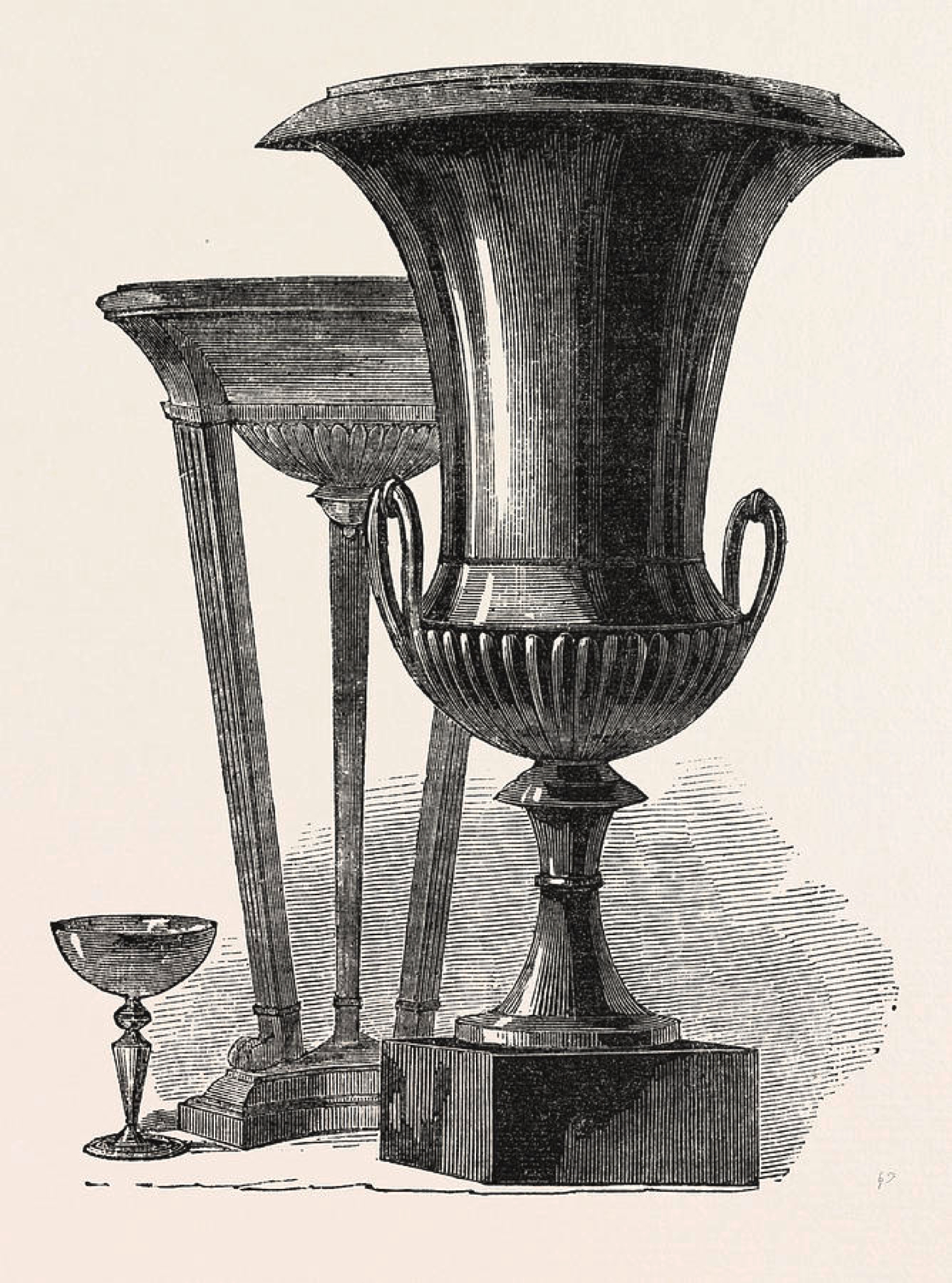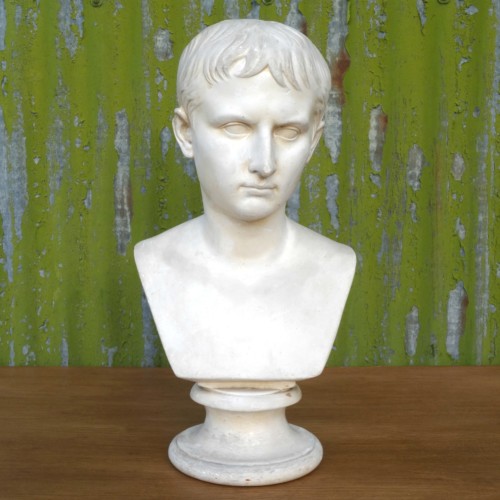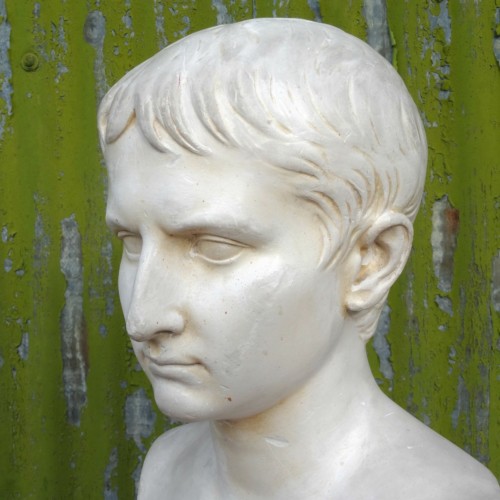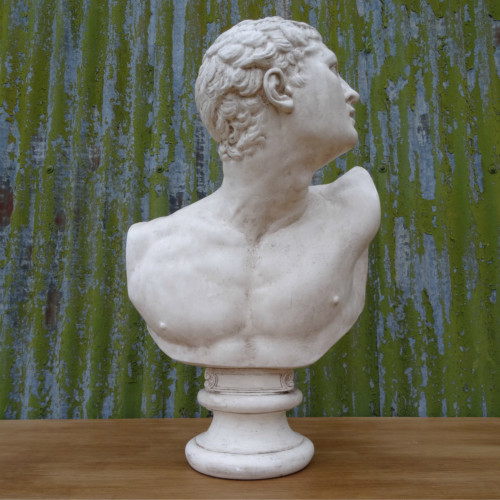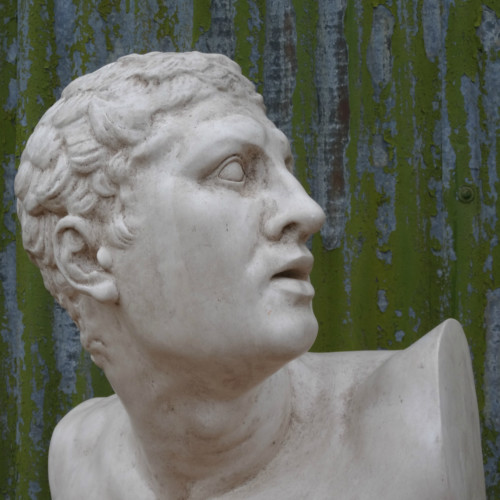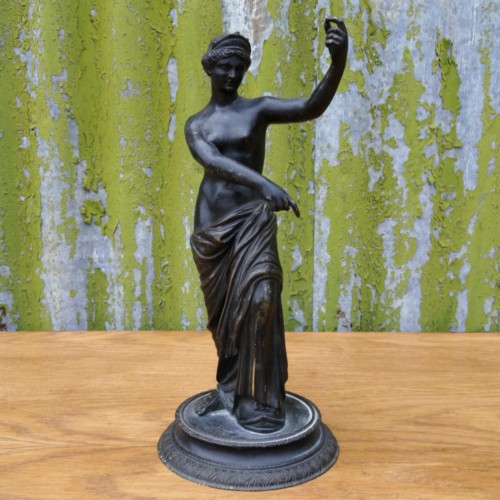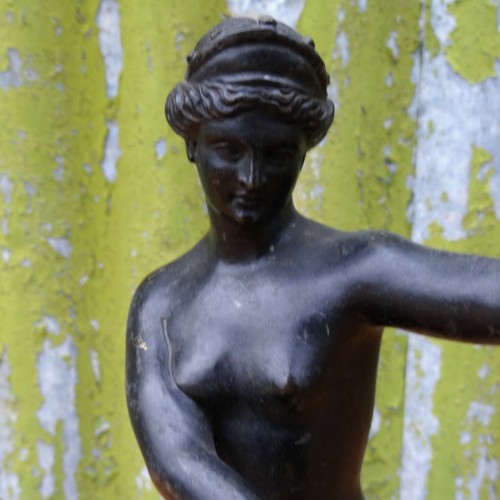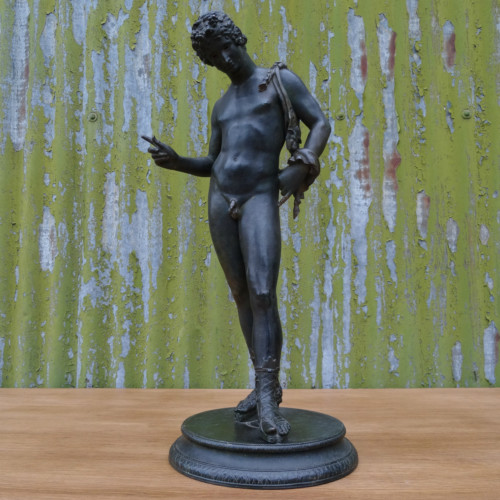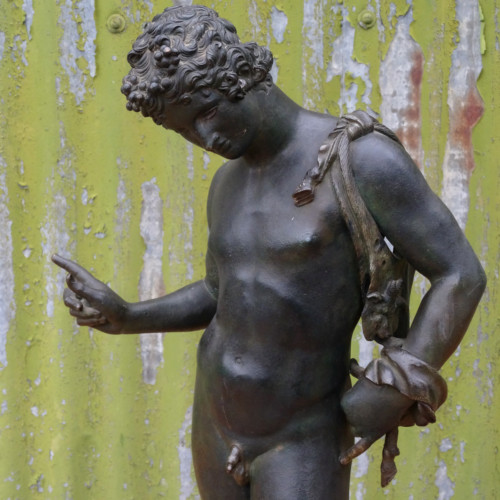A rare Ashford black marble neoclassical campana urn, Derbyshire, England, circa 1840, attributed to Selim Bright.
Provenance: Private Collection, US.
Selim Bright of Buxton, Derbyshire, exhibited at The Great Exhibition 1851, and was listed as ‘S. Bright & Co, Fancy Marble and Spar Manufactory, Centre of The Crescent, Buxton, Inlaid Tables, Vase & C., Of the Finest Workmanship and most Elegant Designs, Admirably Carved Animals, In Great Variety’.
A similar larger pair of urns sold Christie’s London 2010.
Ashford Marble is in fact the hard limestone quarried near Ashford-in-the-Water, Derbyshire; polished to create the jet black lustred finish in the marble workshops. It proved popular as a building material and, as early as 1580, Elizabeth Cavendish commissioned a chimneypiece for Chatsworth. In the 19th century it became very fashionable as a material for both ornamental objects and furniture, and was promoted by William Spencer Cavendish, 6th Duke of Devonshire, who was inspired by Florentine work in Italy.


